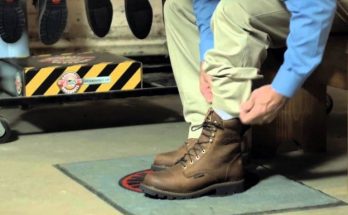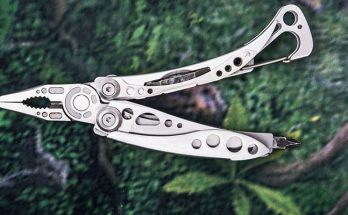Today’s hacksaw is a long cry from the basic hacksaw designs of yesteryear. The finest hacksaws nowadays are made with lightweight metals and are intended for greater reliability, straighter cuts, and consistent results. A hacksaw is essentially a metal-cutting counterpart of a wood-cutting bow saw, but with more teeth for smoother cuts.
So, in this post, we will discuss which is the best hacksaw for electricians, as well as what to look for while purchasing.
Quick Comparision
| Image | Product |
|---|---|

|
Best High Tension Hacksaw: Lenox Tools 12132-HT50 Hacksaw Editor's Rating: 9.8 Brand: Lenox Tools Check Price |

|
Best Hacksaw for Wood: DeWalt DWHT20547L 5-in-1 Multifunction Hacksaw Editor's Rating: 9.6 Brand: DEWALT Check Price |

|
Best Hacksaw for Adjustable Blades: Klein Tools 702-12 Hacksaw Editor's Rating: 9.4 Brand: Klein Tools Check Price |

|
Best Hacksaw for Heavy-duty: Stanley 15-113 12 inch Editor's Rating: 9.2 Brand: Stanley Check Price |

|
Best Hacksaw for Aluminum and Pipe: Greenlee 333A Editor's Rating: 9.1 Brand: Greenlee Check Price |
Types of Hacksaw
Hacksaws come in a variety of forms and sizes to accommodate a wide range of applications and industries. The following are the most common types of hacksaws:
1. Full-sized Hacksaw
Full-sized hacksaws, sometimes known as senior hacksaws, are big, multipurpose instruments that are simple to use and can cut through harder materials quickly. They are compatible with blades with 12, 18, 24, and 32 teeth per inch.
2. Junior Hacksaw
Junior hacksaws are a smaller version that is utilized when the room is restricted or precision cutting is required. They have softer, half-sized blades and are thus unsuitable for cutting tougher materials. Junior hacksaws are small, portable hand tools.
3. Mini Hacksaw
Mini hacksaws are lightweight and compact versions ideal for cutting in tight spaces and accessing difficult-to-reach locations such as residential piping. They are distinguished by long, ergonomic handles and extremely small D frames.
4. Power Hacksaw
Power hacksaws, also known as electric hacksaws, are often equipped with built-in electric motors to power their blades, although they can also be connected to external motors or engines.
Powered hacksaw blades are usually elevated on the return stroke. Power hacksaws are mostly fixed tools, however, there are some portable variants available. Coolant pumps are another frequent feature used to keep the blades from overheating while in use.
Buying Guide
1. Rigid construction and Frame
The frame is an important element of woodworking equipment, and the frame of a hacksaw should be flexible. The blade length is important here, and you can see whether you can produce professional and precise angled cuts.
The tool’s adjustable power allows you to use a blade of varying lengths to achieve the desired outcome. As a result, the frame of a high-quality hacksaw is made of strong metal, making it long-lasting.
2. Comfortable Handle
Hacksaw handles are vital characteristics, and having rubber grips provides comfort when using the instrument for lengthy periods. The tool should be simple to use, and this is determined by how adaptable it is.
It should function as it does in cold and rainy conditions. Furthermore, the handle should be large enough to be easily grasped with one’s hand.
3. Quality Blade
The ideal hacksaw tool can be used with a range of tools that come in a variety of lengths. It should be able to work on a variety of materials.
The blades should be manufactured of high-quality materials to provide the necessary and professional cutting on a variety of materials.
Best Hacksaw for Electrician review
How to use a hacksaw like a Pro?
There are four steps to utilizing:
- Each time you use your hacksaw, be sure it is properly prepared. This involves inspecting the blade for cleanliness and ensuring that the tension is right.
- Make a mark on the pipe where you want it to be cut.
- Make a mark on your hacksaw blade with the mark you just created.
- Push the saw forward and back until you’ve finished your cut.
When using a hacksaw, it’s critical to observe basic safety precautions to avoid injuring yourself or the people around you.
Consider the following critical safety precautions for yourself and others:
- Wear safety eyewear and gloves at all times. You never know when a piece of debris will fly at your hands or face. Wearing gloves can help protect your hands from some of the burs or sharp edges left behind.
- Be cautious of your surroundings when sawing, especially when operating in close quarters. You don’t want to get into an accident because you didn’t see something behind or near you.
- Secure a pipe or conduit with a vice or clamp before beginning to cut it to prevent it from dancing about mid-saw.
- Begin with a few strokes in the opposite direction of the cut to avoid sliding or skating. With each stroke, make sure to use the whole length of the blade.
How to maintain a hacksaw properly?
If you want to maintain your hacksaw in excellent form and a trustworthy component of our toolset, there are a few guidelines to follow. Here are some pointers on how to keep a decent hacksaw in good working order.
1. Safeguard your hands
Wearing gloves on your hands before cutting with a hacksaw can offer you safe while using a hacksaw for any sort of cutting.
2. Wear defensive glasses
When cutting any sort of metal, you should not only protect your hands, but you should also strive to protect your eyes. Any tiny material from your cutting metal might go into your eyes and cause damage. So, in our opinion, if you want to safeguard your eyes, you should wear glasses.
3. Always keep your hacksaw in a right place after usage
If you keep your hacksaw in an improper location, it might lead you or a member of your household to get injured. You can keep your them from rusting if you clean it daily.
FAQs
1. What are the hacksaws good for?
They are most commonly used by electricians and plumbers to cut metal components and equipment. They may also be used to cut wood and hard plastic.
2. What determines the number of teeth to use on a hacksaw?
The pitch of the teeth of a hand blade can range from fourteen to thirty-two teeth per inch (TPI), with a big power hacksaw blade having as little as three TPI. The blade used is determined by the thickness of the material to be cut, with a minimum of three teeth in the material.
3. What is the best TPI for cutting metal?
It is determined by the thickness of the metal. When using a hacksaw to cut thin metal, utilize 18-24 TPI bi-metal blades. Use 8-10 TPI blades for cutting metals like aluminum, and 14-18 TPI bi-metal blades for thick metals.
4. Can a hacksaw cut wood?
Of course, they can cut wood easily. Depending on the thickness of the hardwood block, you can cut using a variety of TPI blades. Or you should use a lower TPI blade for smoother, quicker cuts, and vice versa.
5. Can a hacksaw cut through steel?
Yes, they can readily cut through steel. For a hand blade, the pitch of the blade should be between 14 and 32 teeth per inch (TPI).
Conclusion
To conclude, as you go through the comprehensive evaluation of all the finest hacksaws, you will have a better understanding of the important characteristics to consider.
Not all hacksaws are outfitted with high-quality features that produce professional outcomes. As a result, before investing in one, it is critical to read through them. The extensive part above and the buyer’s guide section will provide you with a thorough understanding of how to select the best one for you.



